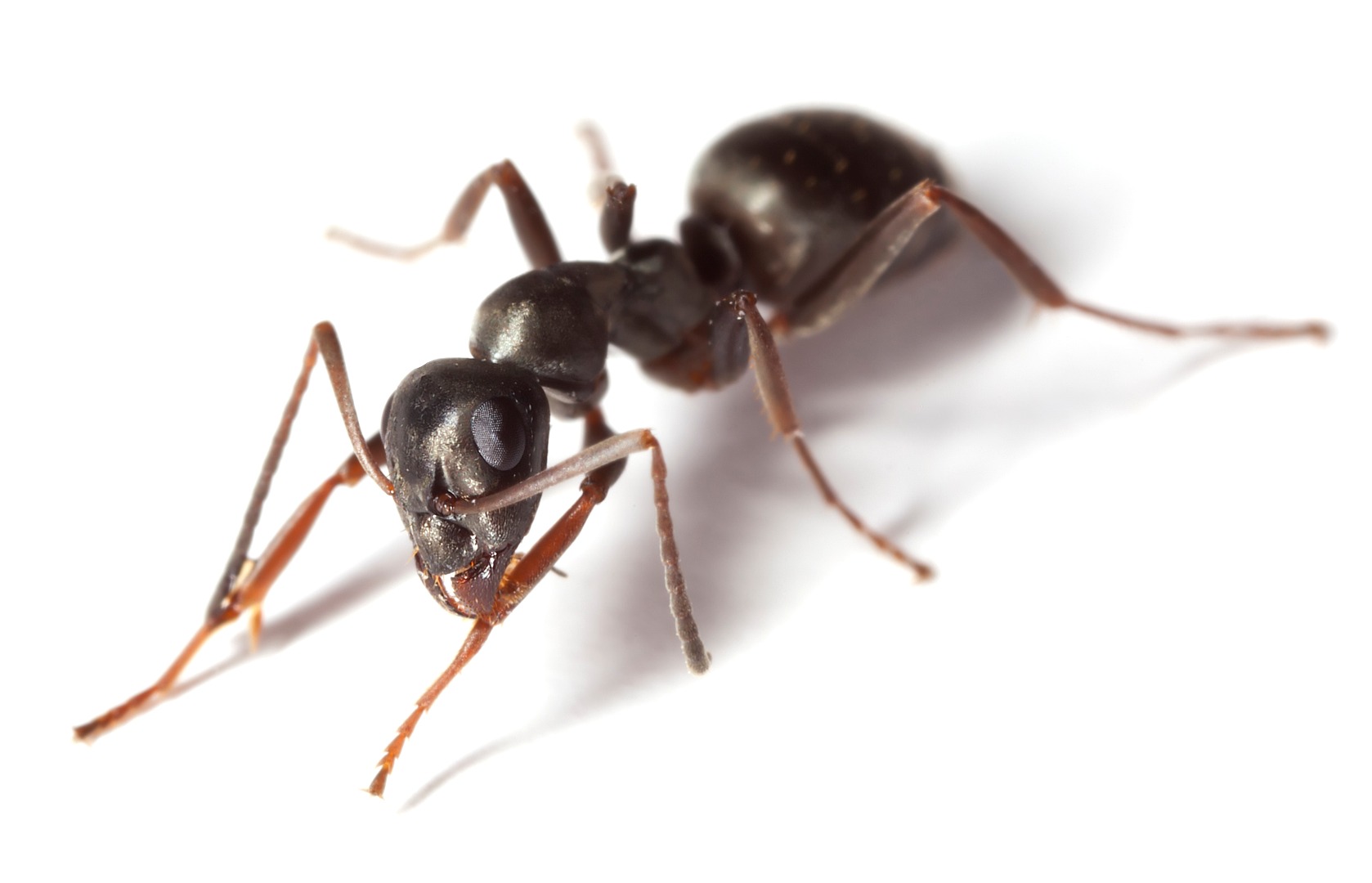Black ant, garden ant
(Lasius niger)
Common black ants, or garden ants, range from 3-5mm in size. The adults are shiny brown/black in colour. The black ant has a large head with an elbowed antennae; the body has a slender thorax leading to a small waist, before joining the large abdomen.
Black ant colonies are around 4000-7000 strong on average. They have a single queen, who lays the eggs. Larvae are fed by the worker ants, whom forage for seeds and nectar in the surrounding areas and return to the nest.
Life cycle:
Complete metamorphosis
| Egg | Eggs are laid by the queen in underground chambers. They are small and white in appearance, and hatch in around 3-4 weeks. |
| Larva | Larvae live submerged within the nest where they are tended to; firstly by the queen, and once the colony is established, by the worker ants. The Larval stage usually lasts for around 3 weeks. The larvae are white in colour and resemble a small grub. |
| Pupa | The pupae is the final stage before metamorphosis into the adult. This stage usually takes around two weeks before the ant emerges. |
| Adult | The adult worker ants are typically 3-5 mm in size. The queen is around 12mm in size and will live for several years. Flying ants will emerge in the warmer months in the UK; both male and females will emerge and mate on the wing. Some females will then leave to establish new colonies. |
Habitat
Commonly found in many parts of the world, including Northern and Western Europe, the ant nests are often located close to human dwellings, underground in soil or sandy areas, such as flower beds or paved areas.









